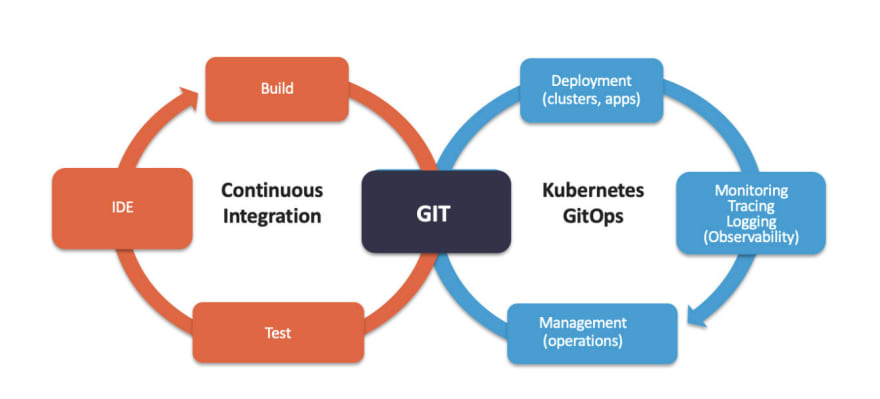A developer when performing tasks related to IT operations is precisely working on GitOps. Hence we can infer that Developers and Operators work hand-in-hand with infrastructure-as-a-code and continuous delivery.
GitOps can combine with Kubernetes, serverless or cloud-native technologies, serving as an operating model for these infrastructure-based applications. It is based on the source-code management, which desires the use of Gitlab.
A quick sneak-peak point: GitOps is a combination of IaC + MRs + CI/CD.
For the record in the system, GitOps requires its users to describe the state of the entire system in a declarative specification. Your environment where the declarative specification occurs may be testing, staging or production, which is present inside the code repo besides the application version.
Why are organizations heading towards using GitOps as a focused work culture?
We are well aware that the Business has to take a quick leap in delivering the uncompromised quality of software. The "newness" factor is a constant change in the software industry. Although the code review and approval are steep steps of software practices that requires a rope of monitoring during production, Gitlab votes for merge requests being the best practice on changes and approval.
GitOps, despite adopting the Continuous Integration and Code Review, integrates the production pipeline in the Git workflow.
Doesn't it sound an efficient workflow for the Software organizations to drive their business?
A peek into working of GitOps
- Pull request operation: GitOps makes its changes using pull requests because it reduces the number of variables which reduces the number of variables.
- Kubernetes orchestration: While GitOps procedures require an efficient underlying orchestration system, many sought-after solutions of GitOps use Kubernetes as their container orchestration system.
- GitOps Operator: Any component introduced with GitOps uses the GitOps operation mechanism, which is a bridge between Pipelining and Orchestration. GitOps is undoubtedly the "Next big Automation tool" with a strong workflow pattern to manage the modern cloud infrastructure.
Take away for the day
- Gitkube - A tool for building and deploying Docker images on Kubernetes that uses 'git push'. After your initial setup, you need to push their repos using 'git push' to build and deploy to Kubernetes automatically. Simple isn't it? See how it works
Follow our community for more goodies, stickers,
t-shirts












Top comments (1)
Here are 3 major factors contribute to the rise of GitOps in 2024:
Increased complexity: As cloud deployments become more complex, managing infrastructure manually becomes cumbersome and error-prone. GitOps provides a declarative and automated way to handle this complexity.
Improved collaboration: Teams can easily collaborate on infrastructure changes using familiar Git workflows, leading to better communication and transparency.
Increased security: Version control and audit logs in Git enhance security by providing traceability and rollback capabilities.
Still thinking if GitOps is better for adoption